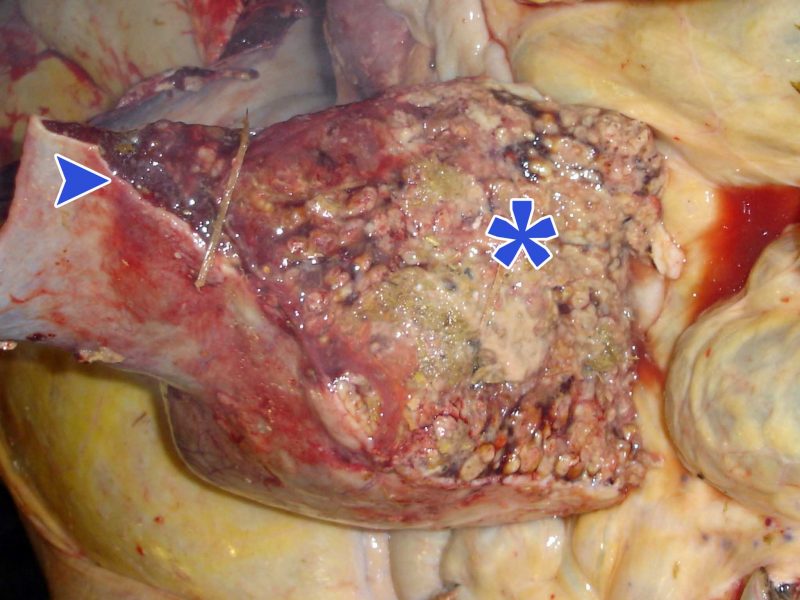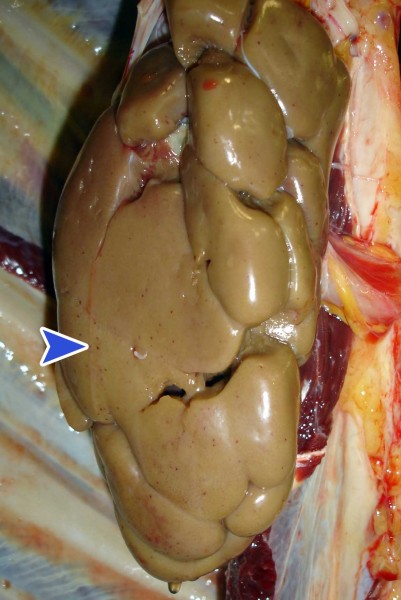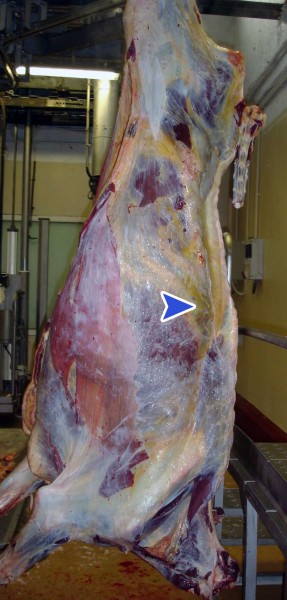Granulomatous like lesion in the spleen.
The pathological examination of the sample evidenced a multifocal, severe suppurative-necrotizing splenitis of bacterial origin. This lesion is most likely associated to a septicemia which would explain the other lesions such as edema and petechiae. The kidney's pale appearance could be due to an amyloidosis secondary to the chronic inflammation occuring in the spleen. To confirm this, histopathological study of the kideney would be needed.
Purulent type lesions in the spleen may be due to different organisms such as Arcanobacterium pyogenes. In cattle it can also occur by extension of a traumatic reticulitis.
The presence of a granulomatous mass in the spleen should rise suspicion of Tuberculosis, therefore samples should be submitted to obtain a definitive diagnosis. Ideally, refrigerated samples should be sent to allow both a pathology study and detection of bacteria by molecular biology. The refrigerated sample would also be available for microbiological studies useful to determine its etiology.




